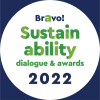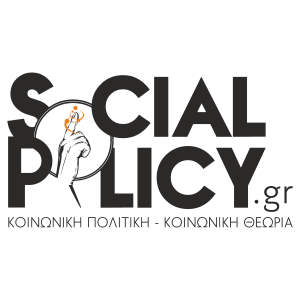Βραβείο 2021

Βραβείο 2022

Στρατηγικός συνεργάτης

Υποστηρικτές Επικοινωνίας


Open access article: https://www.mdpi.com/2504-446X/7/2/81
Abstract
Recent studies state that, for a person with autism spectrum disorder, learning and improvement is often seen in environments where technological tools are involved. A robot is an excellent tool to be used in therapy and teaching. It can transform teaching methods, not just in the classrooms but also in the in-house clinical practices. With the rapid advancement in deep learning techniques, robots became more capable of handling human behaviour. In this paper, we present a cost-efficient, socially designed robot called ‘Tinku’, developed to assist in teaching special needs children. ‘Tinku’ is low cost but is full of features and has the ability to produce human-like expressions. Its design is inspired by the widely accepted animated character ‘WALL-E’. Its capabilities include offline speech processing and computer vision—we used light object detection models, such as Yolo v3-tiny and single shot detector (SSD)—for obstacle avoidance, non-verbal communication, expressing emotions in an anthropomorphic way, etc. It uses an onboard deep learning technique to localize the objects in the scene and uses the information for semantic perception. We have developed several lessons for training using these features. A sample lesson about brushing is discussed to show the robot’s capabilities. Tinku is cute, and loaded with lots of features, and the management of all the processes is mind-blowing. It is developed in the supervision of clinical experts and its condition for application is taken care of. A small survey on the appearance is also discussed. More importantly, it is tested on small children for the acceptance of the technology and compatibility in terms of voice interaction. It helps autistic kids using state-of-the-art deep learning models. Autism Spectral disorders are being increasingly identified today’s world. The studies show that children are prone to interact with technology more comfortably than a with human instructor. To fulfil this demand, we presented a cost-effective solution in the form of a robot with some common lessons for the training of an autism-affected child.
Citation: Deep Learning-Based Cost-Effective and Responsive Robot for Autism Treatment,
(2023). Singh, A.; Raj, K.; Kumar, T.; Verma, S.; Roy, A.M. Deep Learning-Based Cost- Effective and Responsive Robot for Autism Treatment. Drones 2023, 7, 81.
https://doi.org/10.3390/drones7020081
https://journals.sagepub.com/doi/abs/10.1177/13623613221102016
Abstract
One in 44 children in the United States is diagnosed with autism spectrum disorder. Despite this,
physicians receive little clinical training, inclusive of autistic patients. It is therefore not surprising
that physicians report low levels of confidence in their ability to provide care to autistic individuals.
This review examines the impact of specialized training programs on physicians’ knowledge of
autism and their self-efficacy and practice behavior related to caring for autistic patients. A search of
MEDLINE, PsycINFO, PubMed, ERIC, Web of Science, and Scopus was performed to identify studies
evaluating specialized autism training programs for physicians or physician trainees. Seventeen
studies were found to meet the inclusion criteria. The Medical Education Research Study Quality
Instrument was utilized to objectively measure the quality of the included studies. Based on the
results reported in these studies, specialized autism training programs were associated with positive
changes in physician knowledge and self-efficacy related to the care of autistic patients. Other than
short-term increases in screening for autism, no other changes in physician behavior were studied.
These results call for the development and evaluation of autism training programs that focus on
improving physician behavior and patient outcomes.
Lay abstract
Autism spectrum disorder is estimated to impact 1.5 million children and almost 5.5 million adults.
However, most physicians do not receive training on how to provide care to this increasingly large
group of people. After performing a systematic review of the literature and screening over 4,500
unique articles focused on the effectiveness of autism-specific training programs designed for
physicians and physician trainees, we determined that 17 studies met the pre-determined criteria
for inclusion in this systematic review. The results reported by these studies suggest that by
completing specialized training programs related to autism, physicians were more knowledgeable on
topics related to the condition, more confident in their ability to provide care to autistic individuals,
and more likely to screen their patients for autism spectrum disorder. However, further studies with
higher quality data are needed to validate these findings and provide additional insight on the ability
of these programs to improve physician behavior and patient outcomes. We are therefore
advocating that medical educators develop and evaluate specialized autism training programs with
an increased focus on improving physician behavior related to all aspects of providing care to autistic
people.
Citation: Clarke, L., & Fung, L. K. (2022). The impact of autism-related training programs on physician
knowledge, self-efficacy, and practice behavior: A systematic review. Autism, 26(7), 1626-1640.
https://doi.org/10.1177/13623613221102016
Open access article: (https://journals.sagepub.com/doi/full/10.1177/8756870520959658)
Abstract
Schools serve an essential function for individuals with autism spectrum disorder (ASD) and complex needs. However, school-based instruction may be interrupted due to pandemics, natural disasters, and school shootings, and as a result, schools are forced to stop traditional services and begin teaching students in their homes. Fortunately, distance education strategies are available to mitigate brick and mortar interruptions. When rural schools close, they face unique challenges, such as proximity to students, and technology limitations. In this article, we describe strategies for teachers to develop instructional materials, communication supports, and behavioral supports. We also describe how caregivers might provide support, and how to teach caregivers the skills necessary for effective support implementation.
Citation: Donald M. Stenhoff, Robert C. Pennington and Melissa C., (2020). Distance Education Support for Students With Autism Spectrum Disorder and Complex Needs During COVID-19 and School Closures. Rural Special Education Quarterly, 39(4).
Open access article: (https://journals.sagepub.com/doi/full/10.1177/13623613221081189 )
Abstract
Autistic young people in mainstream schools often experience low levels of peer social support, have negative perceptions of their differences and feel disconnected from their school community. Previous research findings have suggested that encouraging autistic young people to explore autistic culture and spending time with autistic peers may be associated with more positive outcomes. Autism-specific peer support is a framework that may support this process. Thirteen participants (eight male/five female) completed semi-structured interviews, exploring the idea of autism-specific peer support within mainstream schools and the practicalities of how it may work within a school setting. Thematic analysis was applied, and three themes are reported: (1) neurodiversity and an ethos of inclusivity, (2) flexibility and (3) benefits and challenges of embedding peer support in the wider school community. The idea of autism-specific peer support for autistic pupils in mainstream secondary schools was generally positively received. Peer support may provide a unique opportunity for autistic pupils to interact in a natural, comfortable way; share useful strategies; and build their identities. Nevertheless, careful design, training and ongoing support, alongside awareness of the rights, needs and preferences of individual pupils involved are likely to be crucial in ensuring the success of any peer support programme.
Lay abstract
Autistic young people may struggle in mainstream schools and feel disconnected from their peers and their school. We know that autistic adults can benefit from spending time with other autistic people, but we don’t know if this is the case for younger autistic people. We conducted interviews with 13 autistic young adults in the United Kingdom who recently left mainstream schooling. We asked them if they would have been interested in being involved in autistic peer support when they were at school, and if so, what that peer support should look like. Results indicated that autistic young people were enthusiastic about the idea of peer support. They thought it was important that peer support was flexible to suit their needs at different times, as well as inclusive, positive, and embracing neurodiversity. They also discussed the potential benefits and difficulties of having a peer support system within a school setting. This adds to the growing body of research on the potential benefits of autistic-autistic interactions on autistic people’s well-being and sense of belonging. Findings can be used to help design pilot peer support projects in schools that can be tested to see how effective they are.
Citation: Crompton CJ., Hallett S., Axbey H., McAuliffe C., Cebula K., (2023). 'Someone like-minded in a big place': Autistic young adults' attitudes towards autistic peer support in mainstream education. Autism, ;27(1):76-91. doi: 10.1177/13623613221081189.
https://pubmed.ncbi.nlm.nih.gov/34344221/
Abstract
The novel coronavirus (COVID-19) disrupted how educators provided supports and services for students with autism spectrum disorder. School closures and related pivoting between learning modalities were difficult for all students, but especially for students with autism, who rely on routine and often require individualized instruction. There has been limited opportunity for teachers to share their experiences of rapidly changing educational circumstances. The purpose of this mixed-methods study was to investigate how special educators and school-based specialists adapted practices for such students in response to pandemic conditions. One hundred and six educators from 40 school districts completed a written survey inquiring about the modifications they made to Individualized Education Programs (IEPs) and their efforts to implement evidence-based practices. Participants reported adding individualized contingency learning plans to Individualized Education Programs, adjusting service minutes, and sometimes eliminating social goals. A thematic analysis (Braun and Clarke, 2006) of educators’ written reflections identified four themes, highlighting a renewed importance on collaboration with parents, who helped deliver intervention and monitor progress in the home setting. While students with more intense needs struggled, others actually preferred virtual instruction. This raises concerns for what will happen in the future, when social expectations resume. Despite the overwhelming challenges posed by COVID-19, participants demonstrated remarkable resiliency and innovation.
Lay abstract
The novel coronavirus (COVID-19) disrupted how special educators provided supports and services for students with autism spectrum disorder. School closures and the related pivoting between learning modalities (i.e. virtual, hybrid, and face-to-face) were difficult for all students, but especially for students with autism, who rely on routine and require individualized instruction. In this study, we surveyed 106 special education teachers, behavior specialists, and speech pathologists who work with autistic students to learn about how they adapted instruction to comply with the complex social distancing rules and changing expectations of the pandemic. Participants reported “making the best out of a bad situation” and “constantly using ‘trial & error’ to find the best way for our students to eLearn.” They emphasized the importance of collaboration with parents, who helped deliver intervention and monitor progress across settings. They made alterations to Individualized Education Programs, by adding individualized contingency learning plans, adjusting service minutes, and sometimes eliminating social goals. Participants were surprised that while students with more intense needs struggled, others actually preferred virtual instruction. This raises concerns for what will happen in the future, when social expectations resume. Despite the overwhelming challenges posed by COVID-19, participants demonstrated remarkable resiliency and an innovative ability to adapt instruction.
Citation: Harriet Hummerstone and Sarah Parsons, (2020). What makes a good teacher? Comparing the perspectives of students on the autism spectrum and staff. European Journal of Special Needs Education,36:610 - 624.